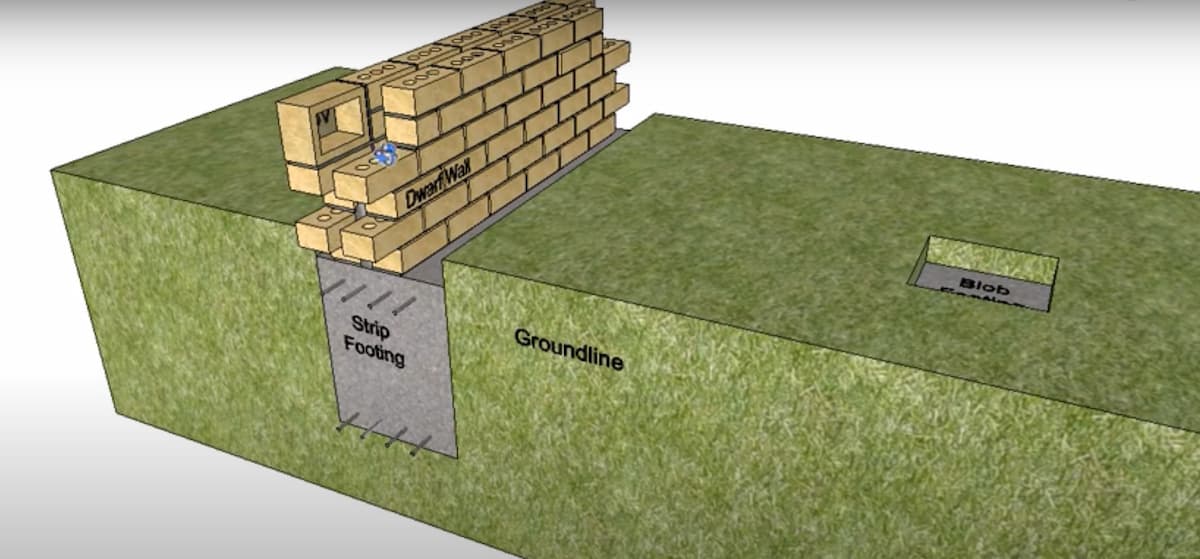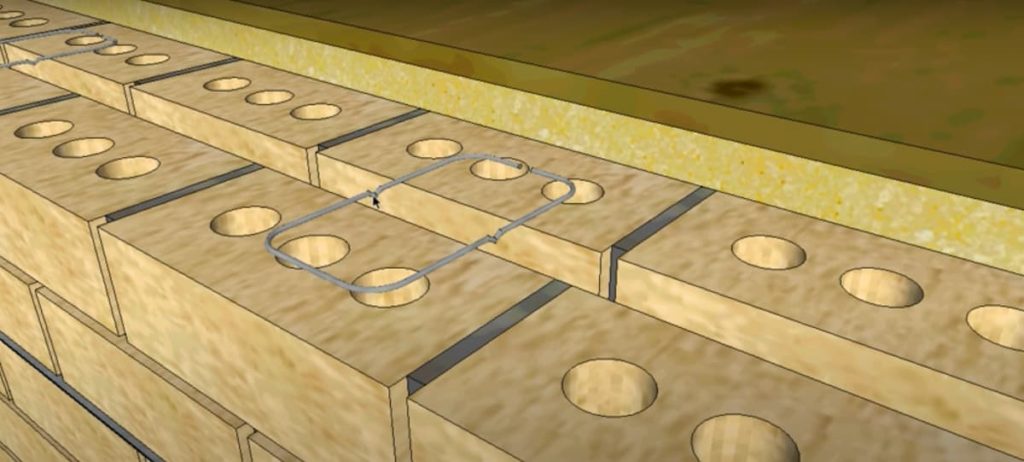
Double brick homes are a type of masonry construction where the outer walls are made up of two bricklayers. In most cases, an air gap or insulation is required between the exterior and internal wall.
Because double-brick homes require extra steps in their construction process, they can cost anywhere from 5 to 25 per cent more than typical stick frame housing.
In addition, the double brick house often has a lesser level of sound insulation compared to other types of homes that may not be as strong on a per-inch basis as a double brick house, but do not have the same additional costs associated with them. For this reason, some builders also refer to double brick houses as “built for comfort.”
What is the Benefit of Double Brick Construction?
One reason why builders prefer using double-brick construction in residential construction is that it provides a greater amount of fire resistance than other types of building materials.
This makes double brick homes more energy-efficient and less likely to experience problems such as water damage during natural disasters, such as floods or earthquakes.
In addition, masonry structures tend to retain heat better than wooden structures. During the winter, the bricks absorb heat from sunlight and release it at night – reducing heating costs for homeowners and helping keep rooms warmer during cold months of the year.
Double Brick Walls Construction
Double brick construction is often used on commercial buildings because there is already a significant cost difference between traditional and double-brick housing options so little additional expense can be saved by choosing another type of material for roofs or siding, which are not affected by insulation anyway.
Though double brick homes are still commonly used, some builders have begun to use an alternative to traditional double-brick construction by using insulated concrete blocks form (ICFs) to construct homes. Though this newer option requires less insulation than standard double-brick homes, there is a growing number of evidence that suggests it may be a viable alternative for those looking for a lower cost housing option.
What is the Difference Between Double Brick and Brick Veneer?
A double brick wall construction is what you would find on a commercial building, while a brick veneer is typically found on single and multi-family homes.
The main difference between the two building materials is that brick veneer only replaces the exterior layer of material with bricks, while double brick construction replaces both.
With double-brick buildings, fireproofing can be built in from the start. In addition, masonry double brick structures tend to hold heat better than wooden structures during the winter months.
Is Double Brick House Good?
Brick veneer is not as good as double brick construction. For example, a brick veneer does not provide fireproofing and may not be as energy-efficient.
However, because it does not involve the same additional costs (5-25% higher) as double brick construction, it can be a viable option for those looking for cheaper houses to buy or rent.
In addition, double brick houses tend to have a lesser level of sound insulation compared to other types of homes that may not be as strong on a per-inch basis. For this reason, some builders also refer to double brick houses as “built for comfort.”

Why do Old Houses have Brick Vents?
Brick vents help eliminate moisture and exhaust gases in rooms so mould does not grow. Certain bricks, such as “air bricks,” also allow air ventilation indoors.
Old houses typically have brick vents because old houses used materials that need to be dried out more often than what we use today.
For example, the materials that were used for roofs and siding when old houses were built can’t stand up to water as today’s alternative materials do, so they require a greater degree of drying out and ventilation
Also, because insulation was not common in older homes like it is today, internal walls would breathe even more than they do now during the winter season when moist air from inside became colder outside and created condensation on interior surfaces – which we would now refer to as mould.
Conversely, during the warmer seasons when moisture levels rise indoors condensation can also occur on exterior walls. During this time, water-laden air is drawn into the brick vents and then released outside like exhaust gas – allowing homes to breathe easier and preventing the formation of mould inside the building.
Are Double Brick Houses Worth More?
Builders of double-brick houses argue that they are worth more than brick masonry brick veneer houses because they provide a better level of insulation and fireproofing. They also claim that a full double brick wall house can retain heat better than other types of construction during the colder months
On the other hand, some builders feel that sticks and bricks, or traditional internal wood-frame homes, can be just as well insulated given their cost. These builders also feel that the differences in insulation between these two options are not enough to justify the additional cost for this type of construction.
The double brick house can be very expensive to buy or rent, but if you plan to stay in your home long-term then it may be worth investing in them to save money in the long run.
What are the Advantages of a Double Brick Home?
Double-brick construction has better insulation because it involves placing double walls between the structural support – allowing for greater control when insulating
The thicker wall means that there is less chance of air infiltration, which reduces drafts and makes heating easier. Double bricks also make walls more sturdy and less likely to bow or flex.
Building with a double brick wall also means that the exterior of the house is more protected. They make the exterior walls more fireproof and resistant to termites
However, double brick also make homes heavier than single brick-walled homes, so it is more expensive to install a double brick veneer.
What are the Disadvantages of Double Brick?
Double brick construction also has some disadvantages. These walls are thicker than single brick walls so they allow less natural light into the interior space.
Also, double bricks can be more difficult to keep clean and maintain a good look – especially if the bricks are not sealed properly. Similarly, double brick homes can be costlier to heat and cool than other types of homes.
Double Brick Houses Australia
Double brick houses in Australia are the same as normal brick veneer home and allow you to take advantage of your property’s sun exposure and natural daylight. If you like the look and feel of using bricks in your home, but don’t want to worry about maintenance or stains, then a double brick veneer is perfect for you.





